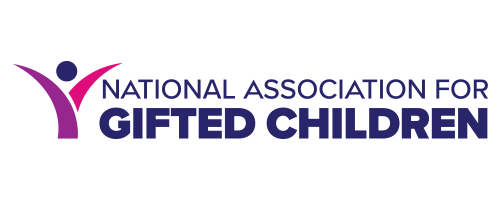Computational Thinking Professional Learning: Enhancing Teacher Efficacy and Practice
By Carla Brigandi, Ph.D.
At the 2024 National Association for Gifted Children (NAGC) Annual Convention in Seattle, WA, the Professional Learning Network honored a team of researchers with the prestigious Network Award for their groundbreaking work on Project Appalachian Coders. This award celebrates sustained and impactful professional learning initiatives that equip educators with the knowledge, skills, and dispositions to excel in gifted education.
Project Appalachian Coders is a five-year initiative funded by the U.S. Department of Education’s Jacob K. Javits Gifted and Talented Students Education Program. Its primary aim is to empower in-service teachers to effectively integrate computational thinking (CT) into their classrooms, emphasizing the needs of gifted learners and striving for inclusivity across all student demographics. Central to this project is the use of Code.org’s professional learning programs and resources. The research team includes Principal Investigator Dr. Carla Brigandi from West Virginia University, together with co-investigators Dr. Karen Rambo-Hernandez of Texas A&M, Dr. Jiangmei Yuan of Pennsylvania State University, and Doctoral Candidate Maryann Hebda from Baylor University.
Characteristics of Effective Professional Learning
The success of Project Appalachian Coders stems from its alignment with research-backed principles of effective professional learning, which are essential for improving teacher efficacy and practice. Key elements of effective professional learning include:
-
Content Focus: Professional learning activities should focus on subject matter and how students engage with content. For CT, this means equipping teachers with strategies to simplify complex concepts like coding and computational logic, making them accessible to young learners.
-
Active Learning: Effective professional learning prioritizes hands-on engagement. Teachers should actively participate in activities such as exploring coding resources, experimenting with tools, and coding, rather than passively attending lectures.
-
Coherence: Professional learning must align with educators’ existing knowledge, beliefs, and broader school or district goals. For example, schools prioritizing mathematics can benefit from integrating CT into math instruction, fostering cohesive and complimentary teaching practices.
-
Duration: Sustained engagement over time is essential, with effective professional learning programs requiring a minimum of 20 contact hours spread across a semester or longer. Professional learning activities offered in smaller, consistent increments ensures that teaches have time to implement new strategies, reflect on their practice, and make iterative improvements.
-
Collective Participation: Engaging teams of teachers from the same grade level or school fosters a collaborative learning environment. Teachers learn from and with one another, strengthening their practices through shared insights and challenges. This collective approach was a cornerstone of the project’s design.
Innovations in CT Professional Learning
Most CT professional learning programs primarily rely on initial workshops, with varying degrees of ongoing support. Although some programs provide follow-up coaching or peer collaboration (e.g., Jocius et al., 2022; Ketelhut et al., 2020; Luo et al., 2023; Nugent et al., 2022; Rich et al., 2021), others lack the sustained support necessary to achieve lasting change (e.g., Carter & Crockett, 2018; Roberts et al., 2018; Simmonds et al., 2019). Project Appalachian Coders transcended this limitation by implementing a comprehensive CT professional learning model that combined initial training with sustained mentoring and community building.
Teachers were introduced to the Code.org curriculum through immersive workshops that emphasized the fundamental principles of CT: decomposition, pattern recognition, abstraction, and algorithmic thinking. The program then provided ongoing assistance through various channels, including:
-
In-person professional learning communities,
-
Online instructional videos,
-
Classroom visits and observations,
-
Virtual and in-person mentoring sessions, and
-
Support from in-school CT teacher leaders.
This holistic approach bridged the common disconnect between professional learning sessions and real-world classroom application, ensuring that teachers could seamlessly integrate CT into their daily teaching practices.
Impact and Implications
Preliminary findings from the project’s empirical studies suggest that sustained CT professional learning improves teachers’ confidence in teaching computational concepts and increases their use of CT practices in the classroom. Teachers reported feeling more prepared to integrate CT into core subjects like mathematics and science, and student engagement with CT activities improved significantly.
Moreover, Project Appalachian Coders underscores the importance of tailoring professional learning to diverse classroom contexts. By equipping educators with adaptable resources and fostering a collaborative learning community, the project demonstrates how sustained PL can drive meaningful change in both teaching practice and student outcomes.
Conclusion
The success of Project Appalachian Coders serves as a model for future initiatives aiming to blend professional learning with computational thinking. By adhering to evidence-based professional learning principles and emphasizing ongoing support, the project has advanced teacher efficacy and enriched classroom practices, particularly for gifted education. As computational thinking becomes an increasingly vital skill in today’s digital age, equipping educators with the tools to teach it effectively is not just beneficial—it is essential.


